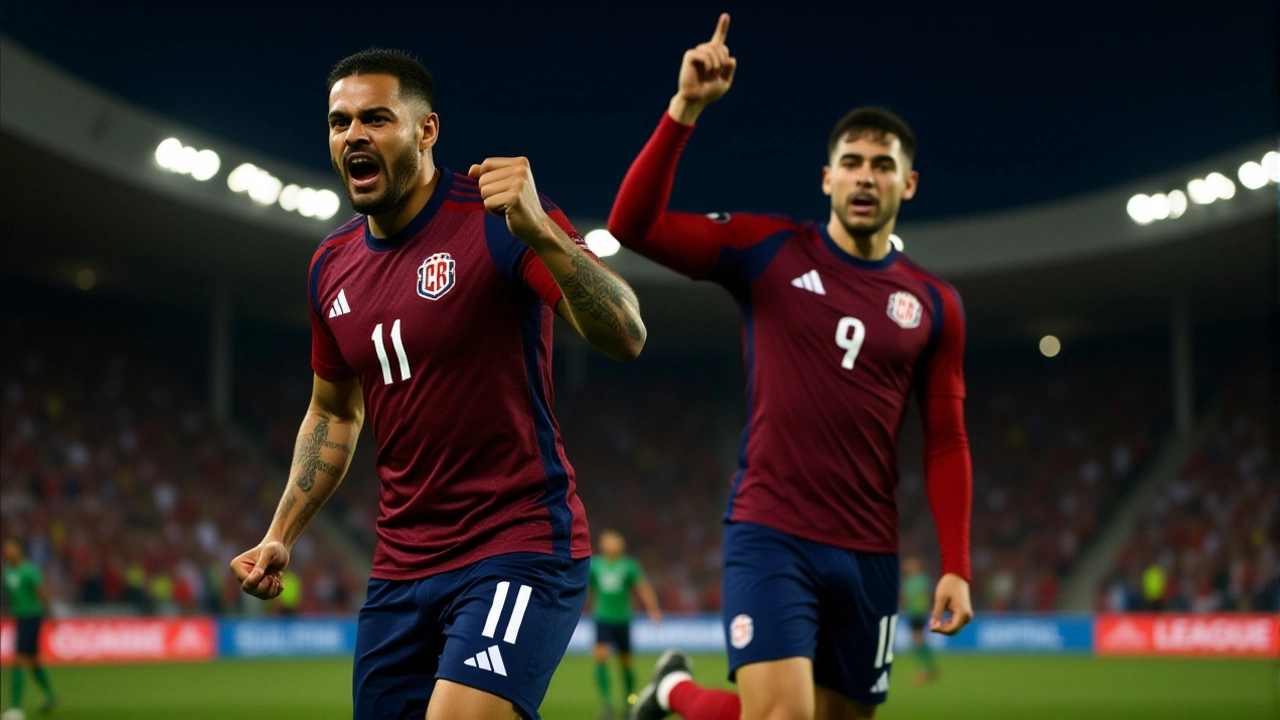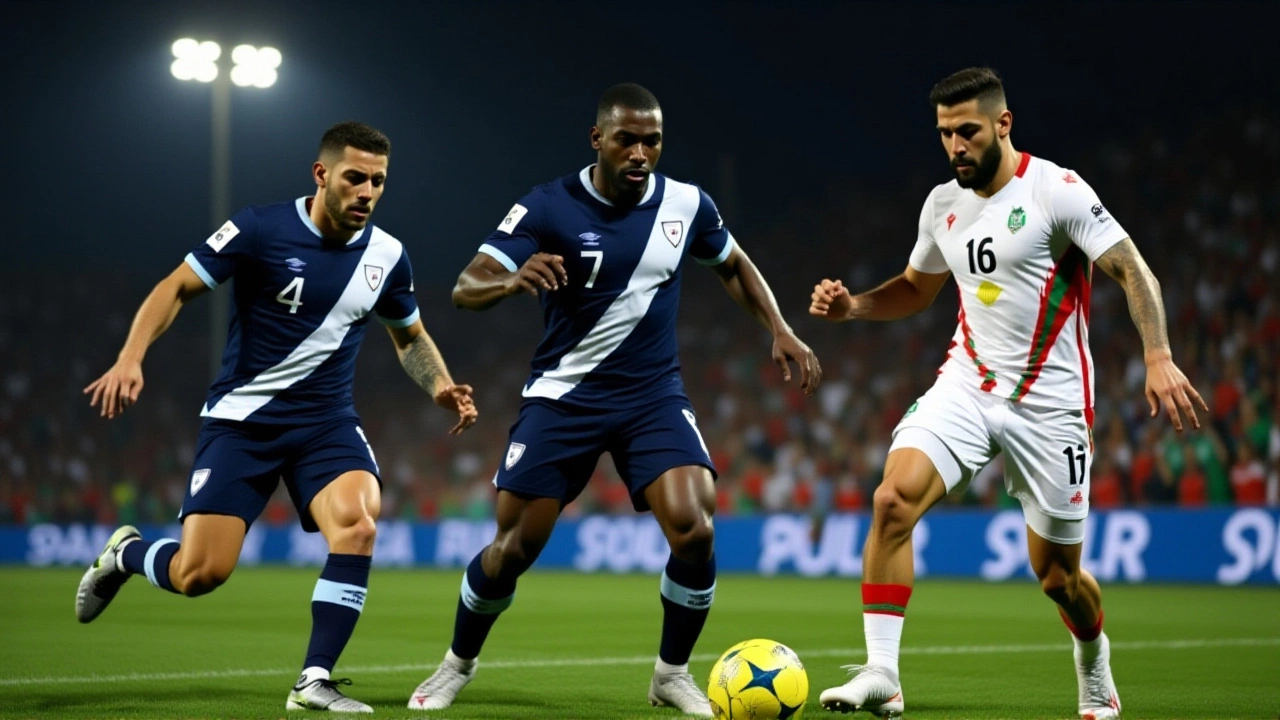Guatemala capped off their 2026 FIFA World Cup qualifying campaign with a gritty 3-1 victory over Suriname on Tuesday, November 18, 2025, at Estadio Manuel Felipe Carrera in Guatemala City. The final whistle blew at 90'+5, sealing not just a win, but a quiet moment of pride for a team that fought hard despite knowing elimination was already locked in. For Suriname, the result was bittersweet — they finished second in the group, punching their ticket to an intercontinental play-off, while Guatemala’s campaign ended with a respectable, if not historic, 8 points.
Final Group Standings Reveal a Tight Race
The CONCACAF Third Round Qualifiers concluded with Panama dominating the group with 12 points (3 wins, 3 draws), earning direct qualification to the 2026 World Cup. Suriname, with 9 points and a +3 goal difference, held off Guatemala’s late push. Guatemala finished third with 8 points (2 wins, 2 draws, 2 losses), just one point behind Suriname. El Salvador, with only 3 points and a -9 goal difference, was left at the bottom — a sobering end to their campaign.
What made this group so compelling wasn’t just the standings — it was the context. Suriname, a nation of just 600,000 people, had never advanced past the second round of CONCACAF qualifying in their history. Now, they were one win away from the World Cup. Meanwhile, Guatemala, a team with more pedigree but inconsistent performances, had to settle for watching from the sidelines. The difference? Consistency. Suriname drew three games. Guatemala lost two. In this stage, draws are currency — and Suriname spent theirs wisely.
The Goals That Mattered
The match itself wasn’t pretty, but it had moments of brilliance. Oscar Santis opened the scoring in the 23rd minute, latching onto a perfectly weighted pass from Rudy Munoz. The Concacaf highlights transcript captured it perfectly: “Such a well-waited ball from Rudy Munoz. Two touches. Santis through on goal.” It was clinical — the kind of finish that reminds you why football still matters in places where resources are scarce.
Suriname equalized just before halftime through Rhono Maharettes, the same striker who had scored twice just four days earlier against another opponent. His brace against El Salvador on November 14 had been the highlight of their campaign. But here, in the final act, he couldn’t deliver the knockout punch. Guatemala responded in the 68th minute with a header from substitute Olger Escobar, who had been instrumental in midfield all night. The third goal came in stoppage time, when Escobar won a crucial free kick in his own half — a moment of grit that sparked a counterattack, ending with a low strike from Jorge Pineda that left the Surinamese keeper stranded.

What This Means for Suriname
For Suriname, this isn’t just progress — it’s legacy. They’ve never been this close. Their next stop? The intercontinental play-off in March 2026, where they’ll face a team from Asia, Africa, Oceania, or South America for one of the final four World Cup spots. It’s a long shot, yes — but not impossible. Just last cycle, Qatar (Asia) and Peru (CONMEBOL) both made it through play-offs. Suriname’s squad, filled with Dutch-trained players and local talent, has shown they can compete. The real question: Can they handle the pressure of a single-elimination game on foreign soil?
“This isn’t the end,” said Suriname’s captain, Ricardo Gomes, after the match. “It’s the beginning of something bigger.”
Guatemala’s Quiet Farewell
Guatemala, known as El Trebol (The Clover) by fans, didn’t qualify — but they didn’t fold either. After losing to Panama and drawing with Canada in their opening games, they found their rhythm. Two wins, two draws, two losses. A +1 goal difference. Not glamorous, but respectable. For a nation where football is more than sport — it’s identity — this campaign gave fans something to hold onto. The team didn’t win the group, but they didn’t quit. That’s worth something.
They’ll now turn their focus to the 2027 CONCACAF Gold Cup, where a new generation — including 19-year-old winger Kevin Morales, who made his debut in this qualifying cycle — will get their chance to shine.

The Bigger Picture: A Qualifying Cycle Like No Other
This qualifying cycle will be remembered for more than just the results. Curacao, with a population smaller than some U.S. cities, became the smallest nation ever to qualify for a World Cup finals after beating Jamaica. Haiti, whose capital is largely controlled by gangs, hasn’t hosted a home game in four years — their entire campaign was played on the road. And now, Suriname stands as proof that size doesn’t dictate destiny.
For Guatemala, this was the end of a chapter. For Suriname, it’s the start of a dream they’ve chased for decades.
Frequently Asked Questions
How did Suriname qualify for the intercontinental play-off despite losing to Guatemala?
Suriname finished second in the group with 9 points from 6 games (2 wins, 3 draws, 1 loss), narrowly edging out Guatemala’s 8 points. Even though they lost the final match, their earlier results — including a 2-1 win over El Salvador and draws against Panama and Canada — gave them the edge. Goal difference (+3) also helped them stay ahead of Guatemala’s +1. The play-off berth goes to the group runner-up, regardless of final match outcome.
Who are the key players for Suriname moving into the play-off?
Rhono Maharettes, who scored twice in their previous match, remains their most dangerous attacker. Midfielder Ricardo Gomes provides leadership, while goalkeeper Jordy Brouwer made 11 saves across the last three matches — the most in CONCACAF qualifying. Their squad is heavily based in the Netherlands, with 14 players from Dutch clubs, giving them a tactical edge over many regional rivals.
What does Guatemala’s performance say about their future in CONCACAF?
Guatemala showed signs of rebuilding. After years of inconsistent results, their 2 wins and 2 draws in this cycle suggest progress. Young talents like 19-year-old Kevin Morales and 22-year-old defender Daniel Vásquez gained valuable experience. With the 2027 Gold Cup on the horizon, this team has a foundation — if the federation invests in youth development and coaching, they could challenge for top-three finishes in the next cycle.
When and how will Suriname’s intercontinental play-off work?
Suriname will compete in the March 2026 intercontinental play-off, where four teams from CONCACAF, AFC, CAF, and OFC will compete in two single-leg matches. The winner of each match earns a World Cup spot. Suriname’s opponent won’t be drawn until December 2025, but they’re likely to face a team from Asia or Africa — possibly Jordan, Senegal, or New Zealand. Their best chance? A neutral venue and a disciplined defensive approach.
Why didn’t Guatemala qualify even though they won their final match?
Winning the final match wasn’t enough because Suriname had already built a one-point lead over Guatemala before the game. Suriname’s three draws — including one against Panama — gave them more resilience. Guatemala’s two losses, especially a 2-0 defeat to Canada, cost them dearly. In World Cup qualifying, consistency beats late surges. Even with a win, Guatemala couldn’t close the gap.
What’s next for CONCACAF after this qualifying round?
The top three teams — Panama, Canada, and the United States — are already qualified as co-hosts. The fourth direct qualifier will be determined by the group winner (Panama), while Suriname joins other runners-up from other confederations in March 2026 play-offs. The full 48-team World Cup lineup will be finalized by June 2026, with the tournament kicking off in the U.S., Canada, and Mexico that June.
